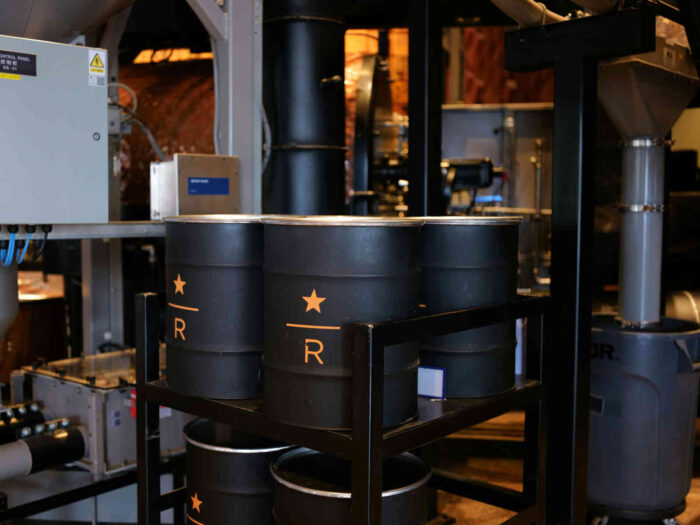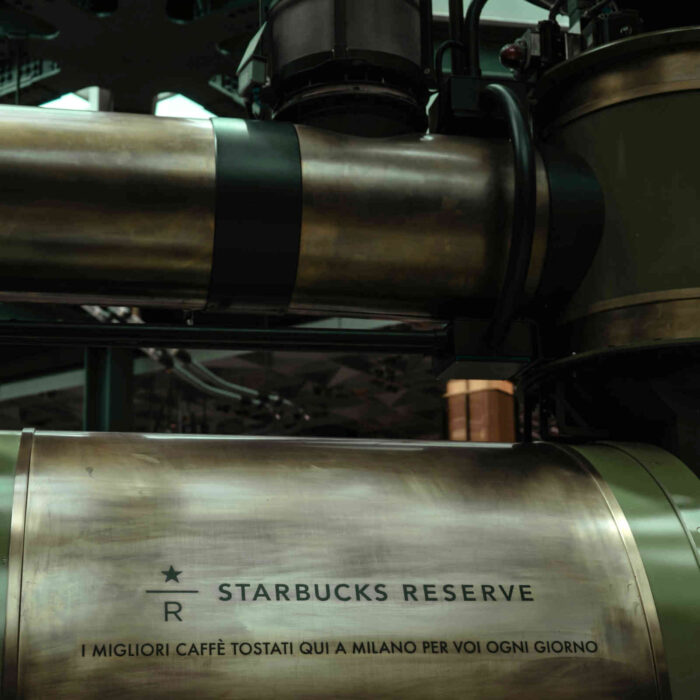
Starbucks Corporation’s operations management (OM) represents business decisions encompassing coffeehouse operations and corporate office activities. These decisions also influence the productivity and operational efficiency of franchisees and licensees.
Strategic decisions in operations management direct business development toward the realization of Starbucks’ mission statement and vision statement. However, the diversity of coffee markets worldwide requires the company to apply different approaches to ensure the suitability of operations management to different business environments. Licensed and franchised Starbucks locations flexibly adjust to their local market conditions.
The 10 strategic decisions of operations management align all business areas in Starbucks’ organization. These critical decision areas’ objectives implement industry leadership strategies, such as the Coffee and Farmer Equity (CAFE) program in supply chain management.
Effective operations management leads to high productivity and service quality, which fortify the strong brand and other business strengths and competitive advantages discussed in the SWOT analysis of Starbucks.
Starbucks’ Operations Management – 10 Critical Decisions
1. Goods and Services require decisions on the characteristics of business processes, inputs, and outputs to meet the target features and quality of Starbucks products. This decision area of operations management affects other areas of the coffeehouse business. For example, the specifications of Starbucks’ roasted coffee beans establish the cost and quality limits and requirements in corresponding production operations.
Starbucks’ emphasis on premium value and premium design means that production operations and productivity measures involve small margins of error to match the high quality and value of food, coffee, and other beverages.
This decision area of Starbucks’ operations management demonstrates the influence of the coffee industry environment on the company and its target consumers. Food product specifications are made to match social and economic trends, as well as the other external trends discussed in the PESTLE/PESTEL analysis of Starbucks.
Distribution channels affect Starbucks’ food, beverage, and service design decisions in this area of operations management. For example, the logistics and inventory processes of distribution channels and retailers influence decisions on the packaging features of Starbucks instant coffees.
2. Quality Management ensures that business outputs satisfy Starbucks’ quality standards and the quality expectations of customers. Decisions in this area of the coffee company’s operations management aim for policies and processes that meet these standards and expectations.
For example, Starbucks sources its coffee beans from farmers who comply with the company’s quality standards. The firm’s decisions also involve preference for buying coffee beans from farmers certified under the Coffee and Farmer Equity program.
Starbucks’ generic competitive strategy and intensive growth strategies are applied to use the company’s quality specifications and standards, which can also be considered as a selling point for food, beverage, and other merchandise.
This critical decision area of operations management also accounts for customer experience at the company’s cafés and in online operations. Starbucks’ strategic objective is to maintain consistently high quality of service.
Premium service quality is ensured through a warm and friendly organizational culture at Starbucks coffeehouses. This approach ensures consistent customer experience at coffeehouses (brick-and-mortar) and in e-commerce environments.
This service quality contributes to competitiveness against other coffeehouse firms, like Costa Coffee and Tim Hortons, as well as foodservice companies that serve coffee, such as Dunkin’, McDonald’s, Wendy’s, Burger King, and Subway. Thus, Starbucks’ competitive advantage partly depends on this decision area of operations management.
3. Process and Capacity Design contributes to Starbucks’ success. The company’s operations management standardizes processes for high efficiency and productivity, as observable at its cafés and other facilities.
Starbucks optimizes capacity utilization to meet fluctuations in demand for coffee and food products. For example, processes at the company’s stores are flexible to adjust personnel to spikes in demand during peak hours.
In this decision area of operations management, strategic planning at Starbucks aims to maximize productivity and cost-effectiveness through efficiency of workflows and processes with support from human resource management.
4. Location Strategy in Starbucks’ operations management for its coffeehouses focuses on urban centers. Most of the company’s locations are in densely populated areas where demand for coffee products is typically high. In some markets, Starbucks uses strategic clustering of cafés in the same geographic area to gain market share and drive competitors away.
Strategic effectiveness in this decision area of operations management comes with a suitable marketing strategy to ensure the profitability of these cafés. Starbucks’ marketing mix or 4P helps bring customers to the company’s coffeehouse locations.
Also, the organization of operations in these locations is supported through a suitable corporate structure. Thus, Starbucks’ organizational structure (corporate structure) reflects this location strategy.

5. Layout Design and Strategy for Starbucks cafés address workflow efficiency. The critical decision in this area of operations management focuses on high productivity and efficiency in the movement of information and resources, including human resources, such as baristas.
Layout strategy decisions maximize Starbucks coffeehouse space utilization with emphasis on premium customer experience, which typically involves higher prices and a more spacious dining (or drinking) environment.
In this decision area of operations management, Starbucks uses customer experience and premium branding to guide layout design and strategy that shape specifications for the design of coffeehouses and other facilities.
6. Human Resources and Job Design have the objective of maintaining stable human resources to support Starbucks’ operational needs. At coffeehouses, the company has teams of baristas. In other parts of the business organization, Starbucks has functional positions, like inventory management positions and marketing positions.
This decision area of operations management considers human resource management challenges in international business, such as workforce development despite competition with other large coffeehouse and foodservice firms in the labor market.
This area of operations management also integrates Starbucks’ organizational culture (corporate culture) to enhance job satisfaction, combat employee burnout, and support high productivity and operational efficiency.
7. Supply Chain Management focuses on maintaining adequate supply that matches Starbucks’ needs, while accounting for trends in the market. With this strategic objective, operations managers apply diversification in the supply chain for coffee and other ingredients and materials. Starbucks’ diverse set of suppliers ensures a stable supply of coffee beans from farmers in different countries.
The company also uses its Coffee and Farmer Equity (C.A.F.E.) program to select and prioritize suppliers based on ethical practices, sustainability, and community impact. Thus, this decision area of operations management integrates ethics and Starbucks’ corporate social responsibility (CSR), ESG, and corporate citizenship into the supply chain.
The Five Forces analysis of Starbucks indicates that suppliers have moderate bargaining power in the industry. Decisions in this area of operations management create a balance between the coffeehouse company and its suppliers’ bargaining power, in order to benefit all parties involved.
8. Inventory Management is linked to Starbucks’ supply chain management. The critical decision in this area of operations management focuses on maintaining the adequate availability and movement of inventory to support the coffee company’s production requirements.
At restaurants/coffeehouses, inventory management involves manual monitoring combined with information technology to support managers and baristas. In supply and distribution hub operations, Starbucks uses automation comprehensively.
Such an approach to this decision area of operations management minimizes stockout rates and guarantees the adequate supply of food and beverage products and ingredients for consistency and stability in Starbucks coffeehouse operations.
9. Scheduling has the objective of implementing and maintaining schedules that match market demand and Starbucks’ resources, processes, operating capacity, and productivity. In this decision area of operations management, the company applies a combination of fixed and flexible schedules for personnel at corporate offices, coffeehouses, and other facilities.
Also, automation is widely used to make scheduling processes efficient and comprehensive, accounting for different market conditions affecting Starbucks locations, inventory management, and material and product distribution.
10. Maintenance concerns the availability of resources and operating capacities to support the coffeehouse chain. The strategic objective in this decision area of operations management is to achieve and maintain the high reliability of Starbucks’ resources and capacities, such as for ingredient production processes.
Starbucks uses its own teams of employees as well as third-party service providers for maintaining facilities and equipment, including machines used for roasting coffee beans and some of the equipment used at coffeehouses.
Also, in this area of operations management, Starbucks maintains its human resource capacity through training programs and retention strategies. This approach satisfies the company’s workforce requirements for corporate offices and facilities and supports Starbucks franchisees and licensees.
Productivity at Starbucks
Operations management at Starbucks uses various productivity criteria, depending on the area of operations under consideration. Some productivity metrics that are applicable to the company’s operations are as follows:
- Average order fulfillment duration (Starbucks coffeehouse productivity)
- Weight of coffee beans processed per time (roasting productivity)
- Average repair duration per equipment type (maintenance productivity)
References
- Bergefurt, L., van den Boogert, P. F., Appel-Meulenbroek, R., & Kemperman, A. (2024). The interplay of workplace satisfaction, activity support, and productivity support in the hybrid work context. Building and Environment, 261, 111729.
- Hingorani, P. P., & Swami, S. (2025). Inter-departmental dyadic coordination in organizations with reference to human resource and operations management. Journal of Advances in Management Research, 22(1), 1-23.
- Mahardika, R. P., Ismoyowati, D., & Ushada, M. (2025). Green marketing in the coffee shop: Gen Z repurchase intention through customer satisfaction. In BIO Web of Conferences (Vol. 167, p. 07004). EDP Sciences.
- Morales, M. S. (2025). The Flexibility Paradigm: Humanizing the Workplace for Productivity, Profitability, and Possibility. Georgetown University Press.
- Peña-Orozco, D. L., Desgourdes, C., Gonzalez-Feliu, J., Velez-Osorio, E., & Cardona-Muñoz, J. D. (2025, January). Harvest planning for efficient and integrated food supply chains: A combined project-operations management approach. In Supply Chain Forum: An International Journal (Vol. 26, No. 1, pp. 73-87). Taylor & Francis.
- Starbucks Corporation Form 10-K.
- Starbucks Ethical Sourcing of Sustainable Products.
- Ziliani, C. (2025). Loyalty strategies and the test of time: Barilla and Starbucks. In Loyalty Management (pp. 232-257). Routledge.